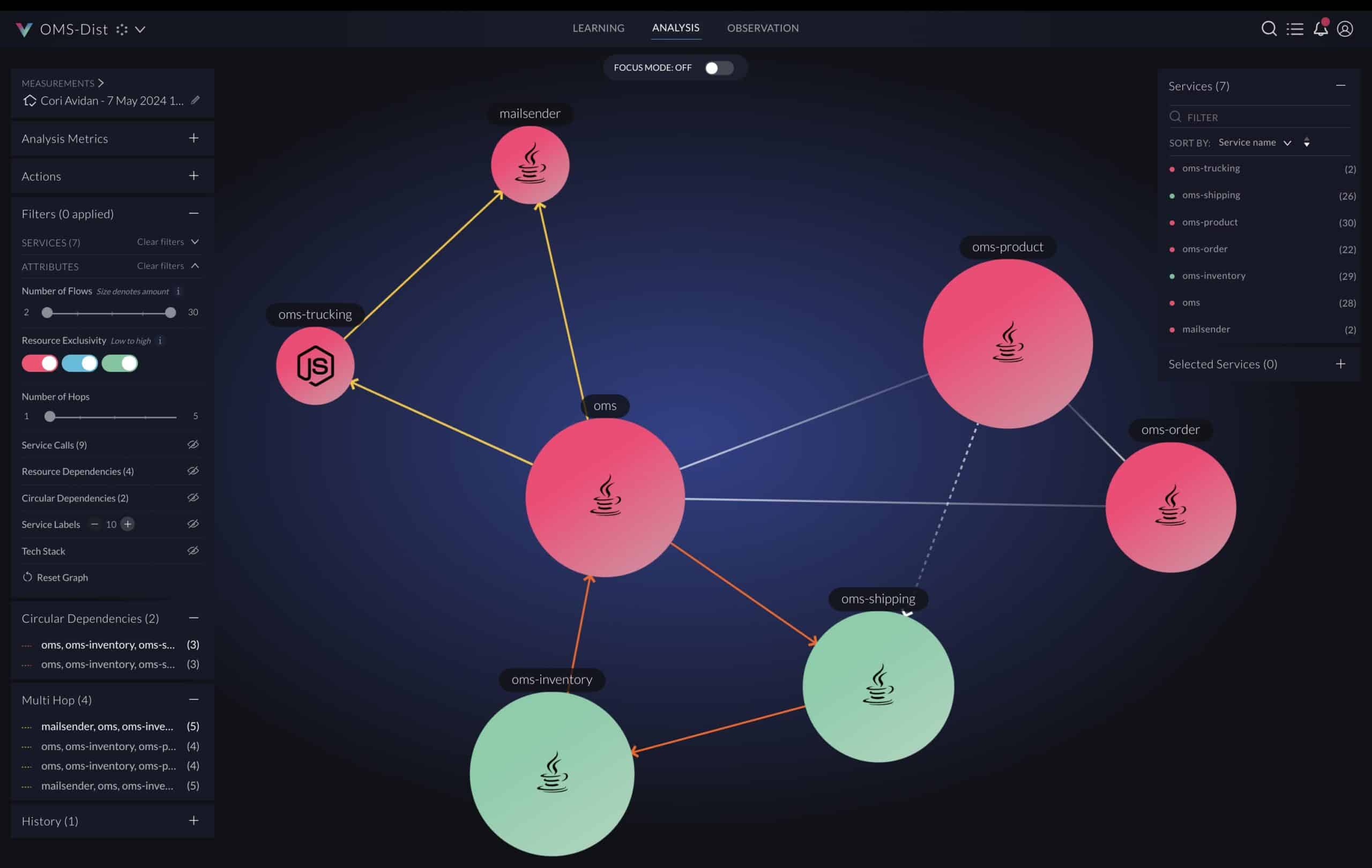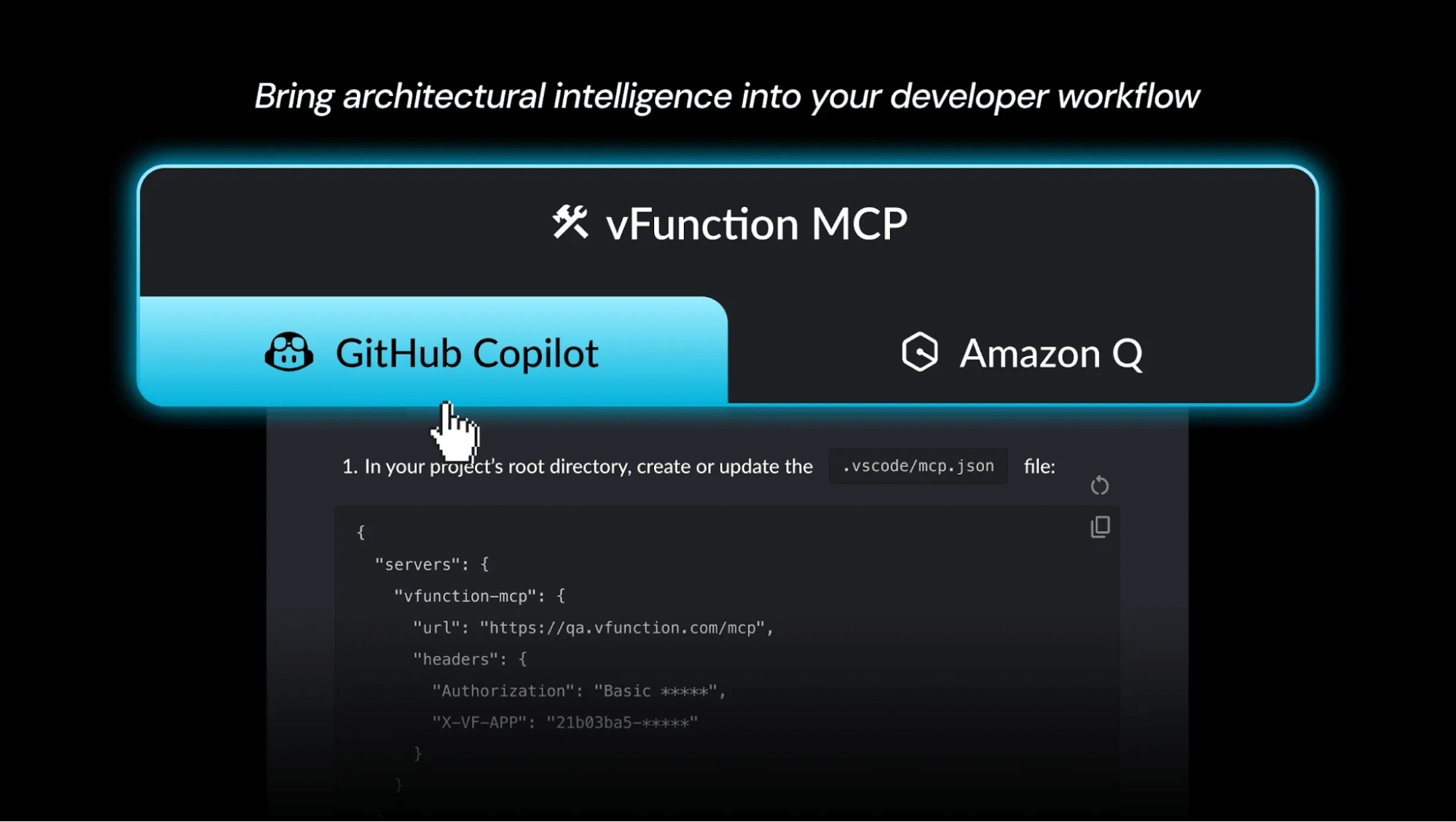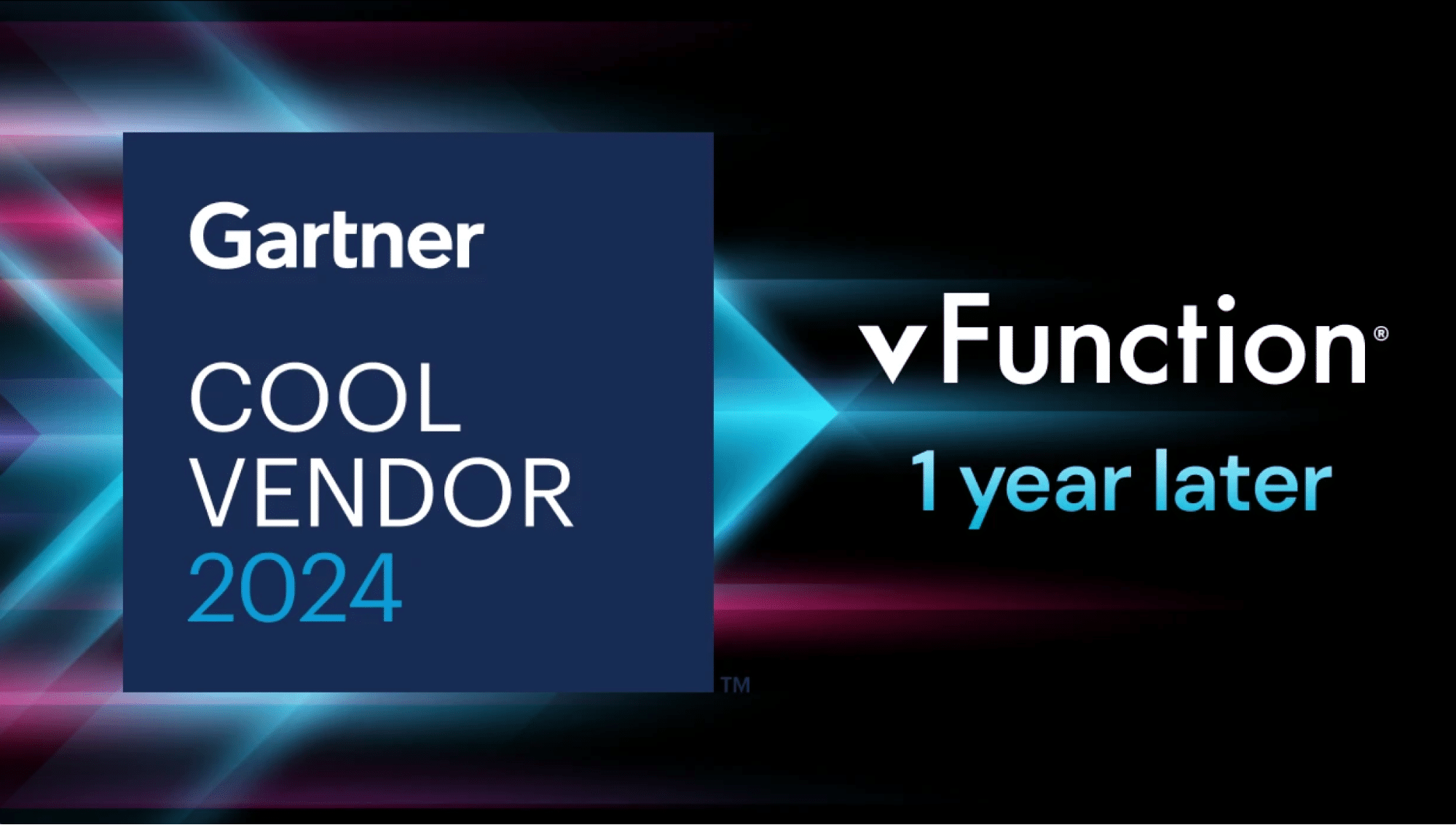Many teams turn to microservice architectures hoping to leave behind the complexity of monolithic applications. However, they soon realize that the complexity hasn’t disappeared — it has simply shifted to the network layer in the form of service dependencies, API interactions, and data flows between microservices. Managing and maintaining these intricate distributed systems can feel like swimming against a strong current — you might be making progress, but it’s a constant struggle and you are left tired. However, the new distributed applications capability in vFunction provides a life raft, offering much-needed visibility and control over your distributed architecture.
In this post, we’ll dive into how vFunction can automatically visualize the services comprising your distributed applications and highlight important architectural characteristics like redundancies, cyclic dependencies, and API policy violations. We’ll also look at the new conversational assistant powered by advanced AI that acts as an ever-present guide as you navigate vFunction and your applications.
Illuminating your distributed architecture
At the heart of vFunction’s new distributed applications capability is the Service Map – an intuitive visualization of all the services within a distributed application and their interactions. Each node represents a service, with details like name, type, tech stack, and hosting environment. The connections between nodes illustrate dependencies like API calls and shared resources.
OpenTelemetry
This architectural diagram is automatically constructed by vFunction during a learning period, where it observes traffic flowing through your distributed system. For applications instrumented with OpenTelemetry, vFunction can ingest the telemetry data directly, supporting a wide range of languages including Java, .NET, Node.js, Python, Go, and more. This OpenTelemetry integration expands vFunction’s ability to monitor distributed applications across numerous modern language stacks beyond traditional APM environments.
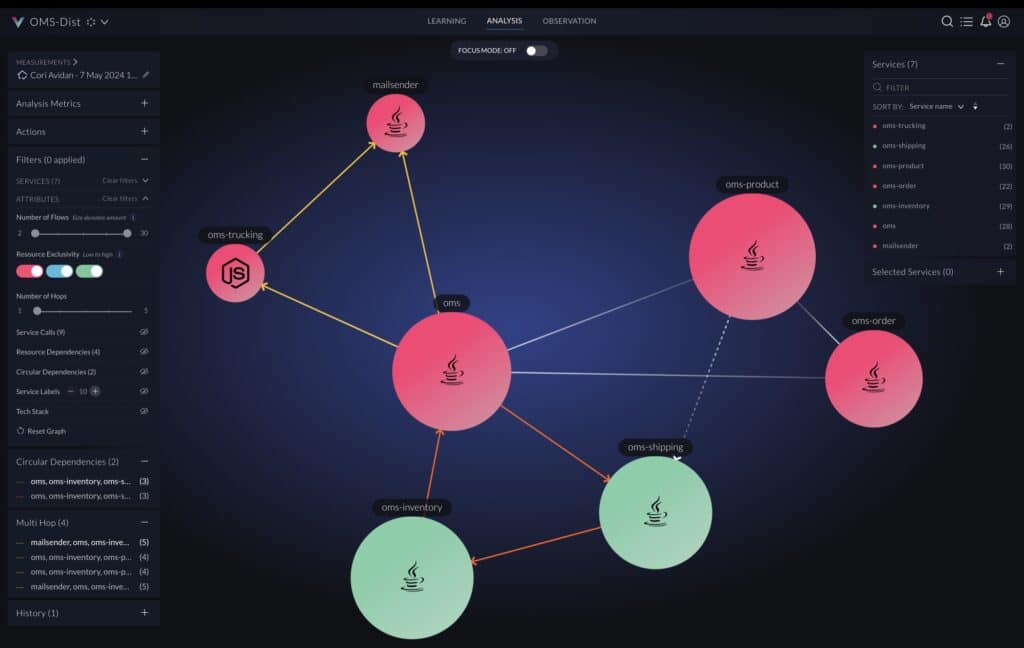
Unlike traditional APM tools that simply display service maps based on aggregated traces, vFunction applies intelligent analysis to pinpoint potential architectural issues and surface them as visual cues on the Service Map. This guidance goes beyond just displaying nodes and arrows on the screen. It applies intelligent analysis to identify potential areas of concern, such as:
- Redundant or overlapping services, like multiple payment processors, that could be consolidated.
- Circular dependencies or multi-hop chains, where a chain of calls increases complexity.
- Tightly coupled components like separate services using the same database, making changes difficult
- Services that don’t adhere to API policies like accessing production data from test environments
These potential issues are flagged as visual cues on the Service Map and listed as actionable to-do’s (TODOs) that architects can prioritize and assign. You can filter the map to drill into specific areas, adjust layouts, and plan how services should be merged or split through an intuitive interface.
Your AI virtual architect
vFunction now includes an AI-powered assistant to guide you through managing your architecture every step of the way. Powered by advanced language models customized for the vFunction domain, the vFunction Assistant can understand and respond to natural language queries about your applications while incorporating real-time context.
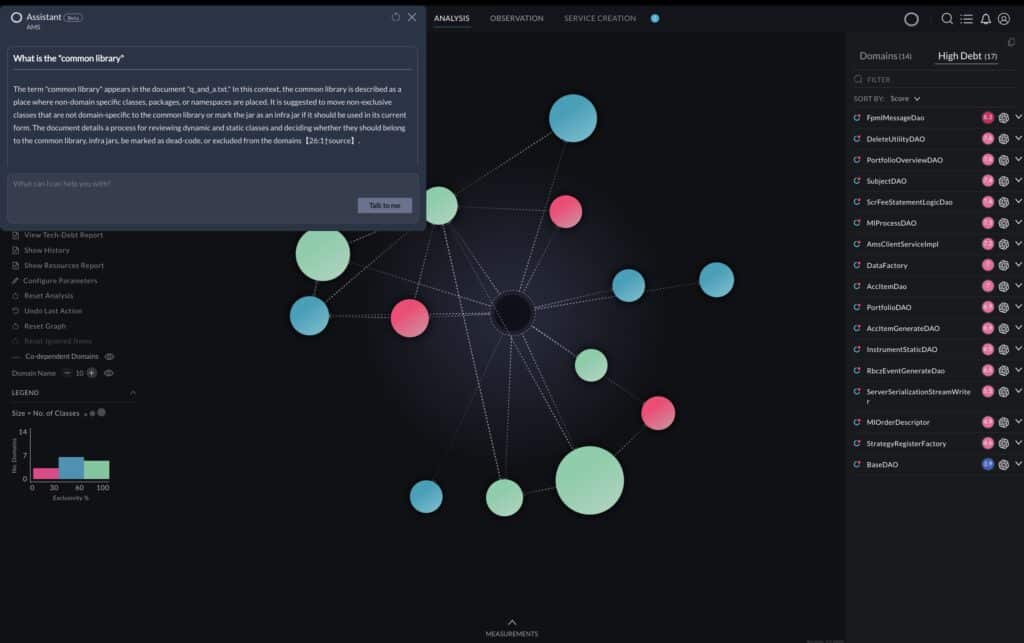
Need to understand why certain domains are depicted a certain way on the map? Ask the assistant. Wondering about the implications of exclusivity on a class? The assistant can explain the reasoning and suggest the next steps. You can think of it as an ever-present co-architect sitting side-by-side with you.
You can query the assistant about any part of the vFunction interface and your monitored applications. Describing the intent behind a change in natural language, the assistant can point you in the right direction. No more getting lost in mountains of data and navigating between disparate views — the assistant acts as a tailored guide adapted to your specific needs.
Of course, the assistant has safeguards in place. It only operates on the context and data already accessible to you within vFunction, respecting all existing privacy, security and access controls. The conversations are ephemeral, and you can freely send feedback to improve the assistant’s responses over time.
An elegant architectural management solution
Together, the distributed applications visualization and conversational assistant provide architects and engineering teams with an elegant way to manage the complexity of different applications. The Service Map gives you a comprehensive, yet intuitive picture of your distributed application at a glance, automatically surfacing areas that need attention. The assistant seamlessly augments this visualization, understanding your architectural intent and providing relevant advice in real-time.
These new capabilities build on vFunction’s existing architectural analysis strengths, creating a unified solution for designing, implementing, observing, and evolving software architectures over time. By illuminating and streamlining the management of distributed architectures, vFunction empowers architects to embrace modern practices without being overwhelmed by their complexity.
Want to see vFunction in action? Request a demo today to learn how our architectural observability platform can keep your applications resilient and scalable, whatever their architecture.




